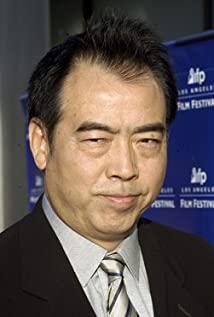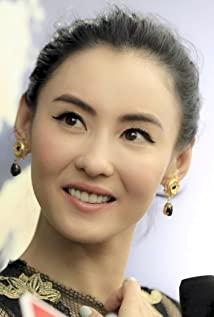Compared with the epic narrative of Western fantasy art, the characteristic of the symbolic (fable) narrative of Eastern fantasy art is, in particular, that the narrated story itself is a symbol, that is, an allegorical expression, such as most ancient Chinese myths and strange novels. And so on, and sometimes even simple symbols are used as the expression method of artistic imaging, the most typical example is "Shan Hai Jing". Symbolic (allegorical) narration determines that it is difficult for oriental fantasy works to form a particularly grand pattern like their western counterparts, but it gives the works a deeper interpretation space and a more implicit symbolic meaning. Although Western fantasy epics have a particularly strong and magnificent appeal in temperament, they are often relatively straightforward. In most Western fantasy works such as "Homer's Epic" and "Beowulf", the narrative process is the main theme. process, the parallel characteristics of the two reflect the simple form inherited from the original myth. And the oriental fantasy works such as "Xiaoyaoyou", "Strange Tales from a Liaozhai", etc., the presentation of the theme often needs to be further considered by the reader, and the narrative is often more subtle. This difference in traditional artistic expression methods has been carried over to the seventh art, which will also lead to differences in the acceptance process. If the method or standard of viewing Western fantasy films is applied to the works of Eastern authors, there will undoubtedly be unavoidable difficulties. For Chinese audiences who are accustomed to the straightforward western way of receiving epic narratives, it is bound to find it difficult to a considerable extent when the "Wuji" is so twisted and slightly "weird" at first sight.
What is a "symbol"? The concept I use here should be understood as an element in a work of art that is different from the image in daily life and has its special artistic intention or artistic expression function. For example, the huge black square in "2001: A Space Odyssey" is a symbol, which symbolizes the mysterious and supernatural power of enlightenment in the film; the line in "Farewell My Concubine" is often recited incorrectly in the troupe and suffers because of it. Punishment's play words (I am a man, not a female Jiao'e) is also a symbol, it symbolizes Xiaodouzi's stubborn gender identity towards self at the beginning... Since symbols are different from daily life images, there are a lot of symbols. The use and interconnection will result in the effect of defamiliarization of the artistic image. Symbols separate the world in the works of art from the world in the experience of life, and also set up obstacles for the viewers who are accustomed to the experience of life to enter, penetrate and experience the world of art. But on the other hand, symbols are the source of artistic charm of works. As far as the field of film is concerned, the reason why the "artistic film" we often say is different from the popular "commercial film" is in a certain sense precisely because the former incorporates more symbols than the latter. Symbols can also be classified according to differences in dimensions or objects. It can refer to an object appearing in a shot, the composition content and form of a shot itself, or the design of a certain plot or even a certain the whole of a character, and so on. The symbolic narrative of "Wuji" is very typical, and here I will only briefly illustrate four types of symbolic objects.
First of all, in the design of decoration and visual components, the director used a lot of symbols. For example, the flowered armor of General Guangming and the armament of the sergeants under his command are uniform and bright red. The red symbolizes Kongwu's male power, tyranny and force. For Guangming, it also symbolizes his arrogance, Proud personality. Another example, the design of the king's palace in the film is different from our general perception. As we all know, most of the monarchs’ palaces in East Asia are located in the center of the city, and the overall cross-section is mostly a square geometric plan (influenced by the aforementioned “cosmos man” thought, according to the “sky round place” principle of heaven and man thought). However, in the film, the king's palace stands alone on a lonely cliff and is designed in a circle. This design, which is different from common sense, reflects the author's intentional symbolic intention. Second, symbols are also used in various special elements that appear in the film. For example, the flower armor of the bright general mentioned above, as a special element set in the film, also has the symbolic connotation of "God of War" fame. The black robe given by Duke Wuhuan to Guilang as a symbol not only symbolizes a kind of freedom beyond nature, but also symbolizes a kind of shackled fate, which is closely related to the theme of the film. Again, the design of many lenses is also full of symbols. For example, after Guangming and Kunlun rescued Qingcheng from an unhappy place, Guangming and Qingcheng rode up on horseback and leaped away from Kunlun's head. ) the sense of absurdity and sadness rolled over by the wheel of fortune, such ingeniously designed lenses can also be regarded as a kind of symbol.
The last category, and perhaps the most criticized category of symbols for this otherwise excellent film, is the setting of some plots with unique meaning or imagery in the film. Among them, the most impressive thing is that it runs through the beginning and end of the film and finally explains a series of conflicting clues. Regarding the "blood case caused by a steamed bun", the reason why it was rejected by people's viewing experience and jokingly eliminated, Just because, when we consider this plot with the logic in our experience and life, we will find it absurd and unreasonable-because someone deceived a steamed bun, it is too much to be full of hatred for the world. Ridiculous - but we don't realize that such a plot is set here as a symbol, not just a plot. It is a manifestation of the generalized variability of experienced life, rather than a direct imitation or reproduction. It appears strange because it tries to trigger the viewer's perception of its connotation through this seemingly strange appearance. A metaphor for thinking about the substance of the body. Then, what is the essence of the metaphorical body of its connotation? Wuhuan's final confession has clearly expressed that it is exactly the maliciousness that a person reacts to the maliciousness of the outside world towards him. Although the causal chain of the symbol expressed as the plot is difficult to be consistent with the logic of our experience and life, the chain of its connotation can be deeply experienced and comprehended by us. And it's especially thought-provoking when tied to the film's final theme.
Returning to the topic of "universal human" thought mentioned earlier, it has been discussed that the origin of the spiritual connotation of the society in the eastern world and the artistic temperament that is more deeply influenced by it is not Confucianism in the eyes of Westerners, but Taoism and Buddhism. Great foundation. The core propositions of the two philosophies of Buddhism and Taoism have also become the core propositions that shape the quality of life and spiritual character of the oriental people, that is: fate and freedom. This also points out the last and biggest symbol of the whole film: Promise. Buddhist philosophy talks about retribution (destiny), Taoist philosophy talks about transcendence (freedom), and the mutual complementation of Buddha and Tao mirrors the confrontation between "natural determinism" and "free will theory" in Western philosophy. However, Western philosophy discusses this issue. It is within the category of epistemology, and the topic of Buddhism and Taoism is within the category of cosmology. In this way, Western philosophy has made the world with its sophistication and meticulousness. "Wuji" is the concept of Taoist philosophy. The emptiness is perfect, boundless, and inexhaustible. It is the ultimate of the Tao, that is, "Wuji", which transparently reflects the spirit of heaven, Taoism and human beings who are seven feet above the head of the oriental people. "The Promise" is a film about the eastern world. It explores this metaphysical issue and also draws a rather "modern" conclusion: fate is on the sidelines, freedom is supreme.
Throughout the whole film, every character is troubled by this contradiction, excited, and determined to live to the end. Manshen is the narrator of "Promise". She is familiar with the fate of Obi, and from time to time, she uses the power of creation to get the fate of human beings. In the film, she made a fateful bet with two people before and after, or signed a fateful bet. Contract: One is Qingcheng, when she is most down; the other is Bright, when he is most proud. The conceited and lustful light begins to lose when it reaches the top. After enjoying power and achievement contentedly, he turned to stealing love, and after enjoying love contentedly, he turned to power grabbing. At the same time, he also inadvertently played the role of helping Manshen bind Qingcheng in the trap of fate. In the end, he was crushed by the iron wheel of fate and suffered a crushing defeat. And Qingcheng, who is pure in her heart and always has a desire to break through the fate trap set by Manshen for her, but after repeated tricks, when she soars freely in the sky with the hand of her beloved, she also declares her A complete victory over Manchu, a complete victory over fate. The agreement with Manshen, which seems to have been borrowed from the ancient "Faust" model in Europe, also most clearly reveals the deep contemplation on the sub-topic of "destiny". other main characters, Although there is no cry of fate from this set of patterns, the meaning of the final theme is also revealed on a more internal and broader level. For Kunlun, from the beginning, the submissive character and humble ability of a slave seemed to be his ultimate destiny. However, his body stood up in the rush, breaking through the identity's definition of self-exterior; later, The character of the inner slave status seems to have become his ultimate destiny. However, his personality also stands up in circles, and the proud general of light is dwarfed in front of him. Therefore, he has broken through this identity to his inner self. At the same time, Qingcheng's fate seems to form a part of his fate, however, when he and Qingcheng finally get married, it will completely break the fate of people's fate. So far, together with Qingcheng, they rely on Wuji's Freedom conquers the ultimate destiny, soaring, and toward the boundary line of heaven and earth and life become the only posture for the existence of these two absolutely free people. In addition, when Kunlun freely puts on the black robe, he also overcomes the fear of death, which is also a kind of detachment from fate. More than that, rushing to get rid of the fate of being slaughtered by the light together with the slaves (beyond the ethnic group), put on the flower armor and go to the king of the capital Qin (beyond the identity) on behalf of the light, and threw himself on the cliff for the princess who fell in love at first sight (beyond the life)... Every step of his is a forge ahead from fate to freedom, and in this forge ahead, he is full of great tenacity to go to the infinite and surpass the infinite. Here, "Wuji" fully interprets "Xiaoyaoyou", and also fully interprets the true Wuji's (Western) liberty-supremacy will or (Eastern) the free spirit of heaven and man.
View more about Wu ji reviews











